Natural disasters do not import diseases, including diarrheal diseases. It is not possible for diseases that are not endemic or imported in the disaster affected areas to occur naturally. Nevertheless, diarrheal diseases are a leading cause of death (40%) in disaster and camp environments.
Epidemics among victims are commonly related to polluted water source (faecal contamination), and contamination of water during transportation and storage. Outbreaks have also been related to shared water containers and cooking pots, scarcity of soap and contaminated food.
What can go wrong?
There are likely to be unsanitary living conditions, damage to sewerage systems, flooding and limited supplies of clean drinking water due to the breakdown of public services. Your planning should include access to the fundamentals of life, particularly secure uninterrupted access to clean drinking water. This is likely to be more substantial than you anticipate – the minimum agreed standard is 20 l per person per day to permit adequate hydration, cooking, sanitation and hygiene (see below)
There is likely to be an increase in vector borne diseases and bites exacerbated by an increase in insect numbers attracted by the unsanitary conditions, standing water etc.
Immediately following natural disaster, most of the deceased will have died from traumatic injuries and the infection risk from handling dead bodies may be considered to be low. Nevertheless, a residual risk, primarily from blood-borne pathogens such as the hepatitis B virus, hepatitis C virus, HIV and ebola virus is presented by the deceased, as with the living. Suitable precautions, including training, use of body bags and disposable gloves and barrier methods, good hygiene practice, vaccination for hepatitis B and tuberculosis are recommended
Encounters with the deceased and the aftermath of natural or man-made disasters place a significant emotional and psychological stress on those involved. You should be adequately prepared to witness unpleasant sights and circumstances, including death. During and after your task, you should remain aware of the potential of Post-Traumatic Stress Disorder (PTSD), be able to recognise the development of PTSD in yourself and colleagues, and know the appropriate steps to take.
The normal risk of the subject country’s usual endemic illnesses is likely to be increased by local conditions, including the lack of sanitation and breakdown of indigenous health-care systems and the presence of an international cadre of aid workers drawn from diverse nationalities, each with their own indigenous health risks. Don’t forget the other health risks of travel such as sun exposure, dehydration, heat exhaustion, fatigue etc.
Numerous environmental risks to health exist and will he exacerbated by operational functions. Caution should be exercised to avoid electrocution from downed power lines, injury caused by collapse of unstable buildings and falling masonry, dust from damaged buildings which can include asbestos and potentially hostile individuals and groups under stress. Self-inflicted hazards may be generated through fatigue, exceeding safe driving hours, often on unsuitable road surfaces, dehydration and poor nutrition.
Floods constitute the most common (40%) natural disasters and are prone to generating a wide range of disease, resulting from the displacement of people into overcrowded camps and cross contamination of water sources with fecal material and toxic chemicals. Flooding is also usually followed by the proliferation of mosquitoes resulting in an upsurge of mosquito-borne diseases such as malaria and dengue fever, and a proliferation of rats generating a Leptospirosis risk.
Due to travel disruption and damaged infrastructure, you may not be able to rely on the usual emergency evacuation routes if you are unwell. Planning and preparation must incorporate this inherent reality.
Threats to health will alter over time following a natural disaster and will change as the disaster and its response matures. Every disaster is slightly different, but the evolving situation will generate the following threats, in roughly the following order, which should be factored in to your dynamic risk assessment:
- Traumatic injuries
- Population displacement from non-endemic to endemic areas,
- Overcrowding – close and multiple contacts
- Insufficient / contaminated water and poor sanitation
- Stagnant water after flood and heavy rain
- Insufficient nutrient intake and malnutrition
- Low vaccination coverage and breakdown of healthcare systems.
Legal/Â鶹Éç Requirements
- This guide provides important background and information to inform your planning, assessment and arrangements. Reading it does not make you an expert, nor preclude the need for separate risk assessment. If you require any additional information or clarification you should always contact the Safety Advice Line or High Risk team, as appropriate.
Control Measures
General Controls
- Get advice on the normal risks of international travel for the area you are visiting
- Carefully consider the health basics for life you will need before you travel to the disaster area – namely water, food, shelter, clothing and health care
- Take a water purification filter and water treatment tablets in case you have to use local water supplies. Boiling water vigorously for 5 minutes is a good way of eliminating most infections, but will not remove other contaminants such as poisons or chemicals
- If there is any doubt about food or water then remember – Boil it, Cook it, Peel it, or Forget it! A final caveat may be to recognise it. This may not be the ideal moment to become adventurous in your culinary habits
- Make sure you take sufficient routine medication and any other specific medication e.g. Malaria tablets, before you travel out. Local supplies are unlikely to be available or trustworthy
- You may need to take a larger First Aid kit and/or a number of smaller ones
- Don’t be tempted to give your medication away – you may need it! Offering medical assistance, food or clean water to one individual is likely to lead to hostility if you do not have sufficient resources to cater to the entire population
- Take dried food/tinned food and clean drinking water with you as both will be in short supply, and purity of local supplies cannot be guaranteed
- Pay close attention to personal hygiene. Make sure you wash or clean your hands thoroughly especially before touching your face or eating and after using the bathroom. An alcohol based wipe or gel can be useful for this purpose and minimise use of precious water
- To prevent insect bites sleep inside an insecticide impregnated net and make sure you wear long trousers and sleeves, using DEET as an insect repellent - see also Malaria Information sheet (in Useful Documents)
- Make a habit of performing a daily inspection of your living area to remove all sources of standing water, particularly after rain. Even the smallest pot of stagnant water can provide a breeding ground for mosquitos
- Be aware of other risks that may not be immediately apparent such as disruption to industrial areas, fuel or chemical storage or nuclear sites if present. Be aware of what is upwind and upstream from you
- When planning a route to any location, plan your route home as well, including an easily identifiable meeting point in case of separation
- Pay close attention to the weather forecast, which will inform your ongoing risk assessment regarding the likelihood of road accessibility, potential landslides, flash flood risk etc. Always remember that just because a location has suffered one natural disaster does not provide any guarantee that a second will not follow while you are there. This is particularly true of earthquakes and tsunami
- The Â鶹Éç evacuation supplier should be able to get into a main airport if it hasn’t been affected by the disaster, but you will need to plan evacuation from the disaster area to the airport which may require the use of a helicopter or other vehicle that can negotiate the disaster area.
Division Specific Issues
- No divisional specific issue.
FAQs/Did You Know?
- The increase in stray animals could increase risk of rabies in endemic areas
- Snakes may be displaced from their natural environment and may be more dangerous.
Recommended links
-
[Â鶹Éç Network only]
-
-
-
-
National Library of Medicine (US)
-
Dangerous deployment topics
-
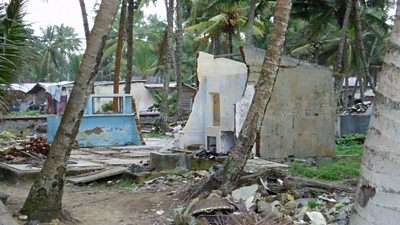
Disaster Coverage
A guide to covering disasters. -
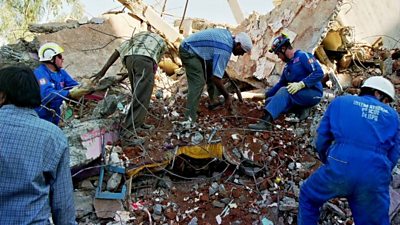
Disaster Coverage - Health Aspects
A guide to health risks when visiting areas subject to natural or man-made disasters. -
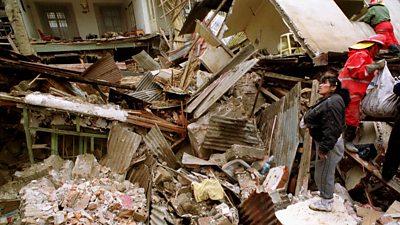
Earthquakes
A guide to working in areas affected by earthquakes. -
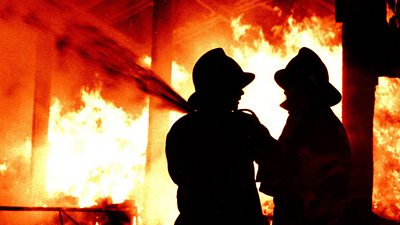
Fires - Buildings and Bushfires
A guide to deployments of journalists and crew to large building fires and bushfires. -

Hostile Environments
Hostile Environments and Travel Advisory information and Country List -
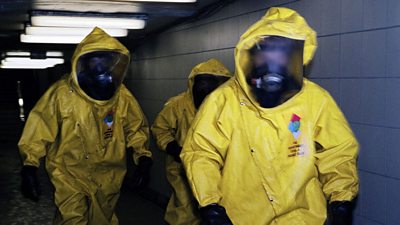
Industrial Spills and Chemical, Biological, Radiation Hazards
A guide to chemical, biological and radiation related hazards. -
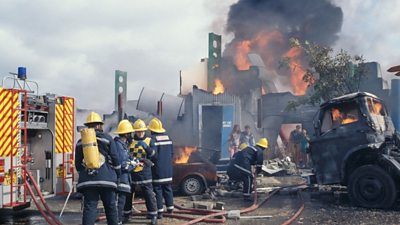
Trauma and PTSD
A guide to dealing with trauma or a traumatic event. -
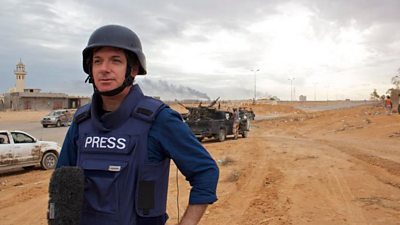
Safety Equipment Stores
Our safety equipment store details -

Terrorist Bomb Incidents
A guide to covering bomb story threats
More from SSR
-
Your platform to record accidents, risk assessments, assurance monitoring and inspections
-
Safety Equipment Stores
Just one number to call: 020 3614 5155 -
Â鶹Éç Safety Guidelines
An A-Z of Â鶹Éç's Health and Safety Guidelines -
Safety Advice Line: 0370 411 0464 Email: safety@bbc.co.uk
- A-Z of Â鶹Éç Safety Guidelines
- Accident Reporting and Investigation
- Â鶹Éç Health & Safety Policy
- Contractors (incl. vetted lists)
- Contributors
- Fire Safety
- Freelancers
- Independent Production Companies
- Risk Assessment
- Safety Alerts
- Safety Responsibilities
- Safety Training
- Sets & Premises Safety Guide
Events guidance - key links:
- Exhibitions
- General Guidance
- Indoor Location Recce Checklist
- Outdoor Location Recce Checklist
- Major Incidents & Emergency Planning
- Marketing and Promotional
- Noise Exposure
- Planning and Management
- Responsibilities
- Responsibilities Form
- Laser Lighting Effects
- Strobe Lighting
- Temporary Stages and Rostra
Health topics - key links:
- (Â鶹Éç network only)
- Contributors Fitness to Participate
- Display Screen Equipment (DSE)
- (Â鶹Éç network only)
- First Aid and Welfare on Location
- International Travel - Risks & Health
- Manual Handling
- Mental Health: Homepage
- (Â鶹Éç network only)
- Personal Health and Wellbeing
- Pregnancy
- Psychological Trauma Support & Trauma Risk Management (TRiM)
- Tiredness and Fatigue
- Travel Health Contacts
Â鶹Éç High Risk - key links:
- CBRN and Industrial Spills
- Covert Filming
- Crisis Management and Security Support
- Demonstrations, Protests and Crowds
- Disaster Coverage
- Door Stepping
- (Â鶹Éç network only)
- (Â鶹Éç network only)
- Public Order
- Safety Equipment Stores
Â鶹Éç Journalism - key links:
Â鶹Éç Productions - key links:
- Aerial Filming and Airfields
- Animals: Displaying and handling for performance
- Boats: Working on
- Children and Young People
- Driving
- Electrical Equipment and Systems
- First Aid and Welfare on Location
- Food Safety (Cooking and Catering)
- Remote Location Working
- Roads and Streets: Working by
- Security of Productions on Location
- Stunts
- Tiredness and Fatigue
- Unmanned Aerial Systems (UAS aka Drones)
- Vehicles: Recording in, from and around
- Working at Height: Mobile Elevating Work Platforms
- Working at Height: Tower Scaffolds
Â鶹Éç Radio - key links:
- (Â鶹Éç Network only)
Â鶹Éç Security - key links:
Â鶹Éç Sport - key links:
About this site
This site describes what the Â鶹Éç does in relation to managing its health, safety and security risks and is intended for those who work directly for the Â鶹Éç.
It is not intended to provide instruction or guidance on how third parties should manage their risks. The Â鶹Éç cannot be held liable for how this information is interpreted or used by third parties, nor provide any assurance that adopting it would provide any measure of legal compliance. More information
Some links on this site are only accessible when connected to the Â鶹Éç network
